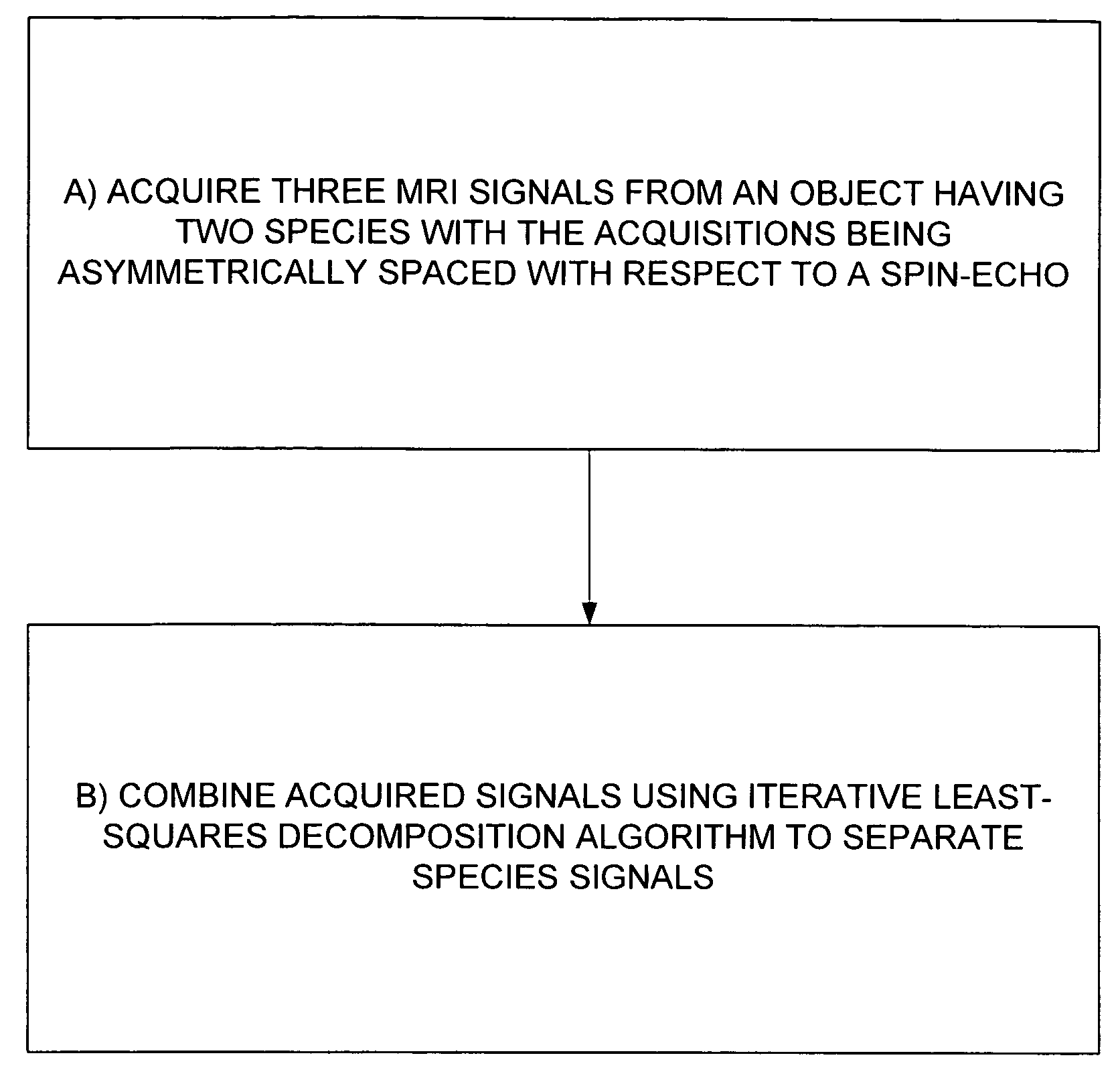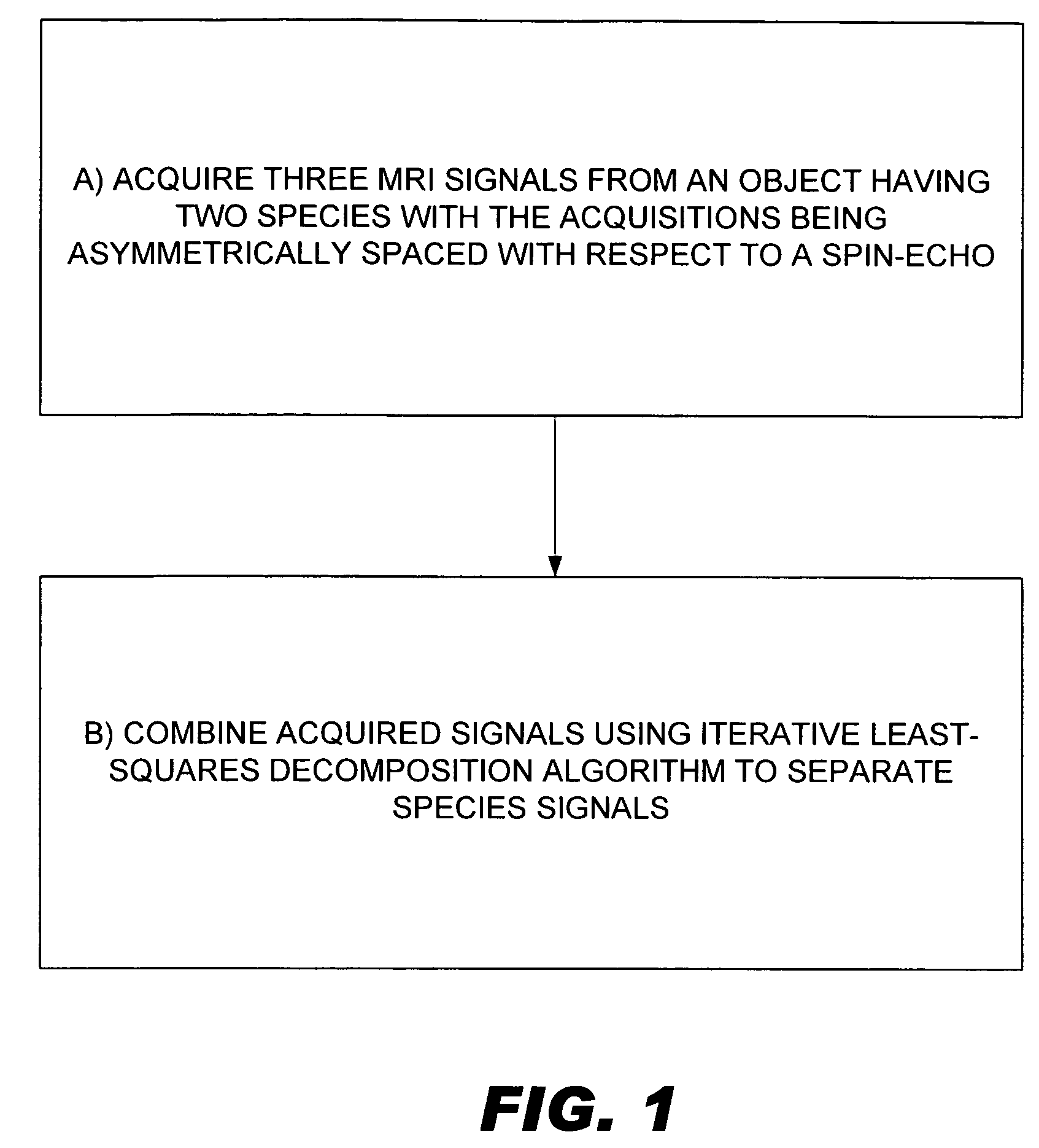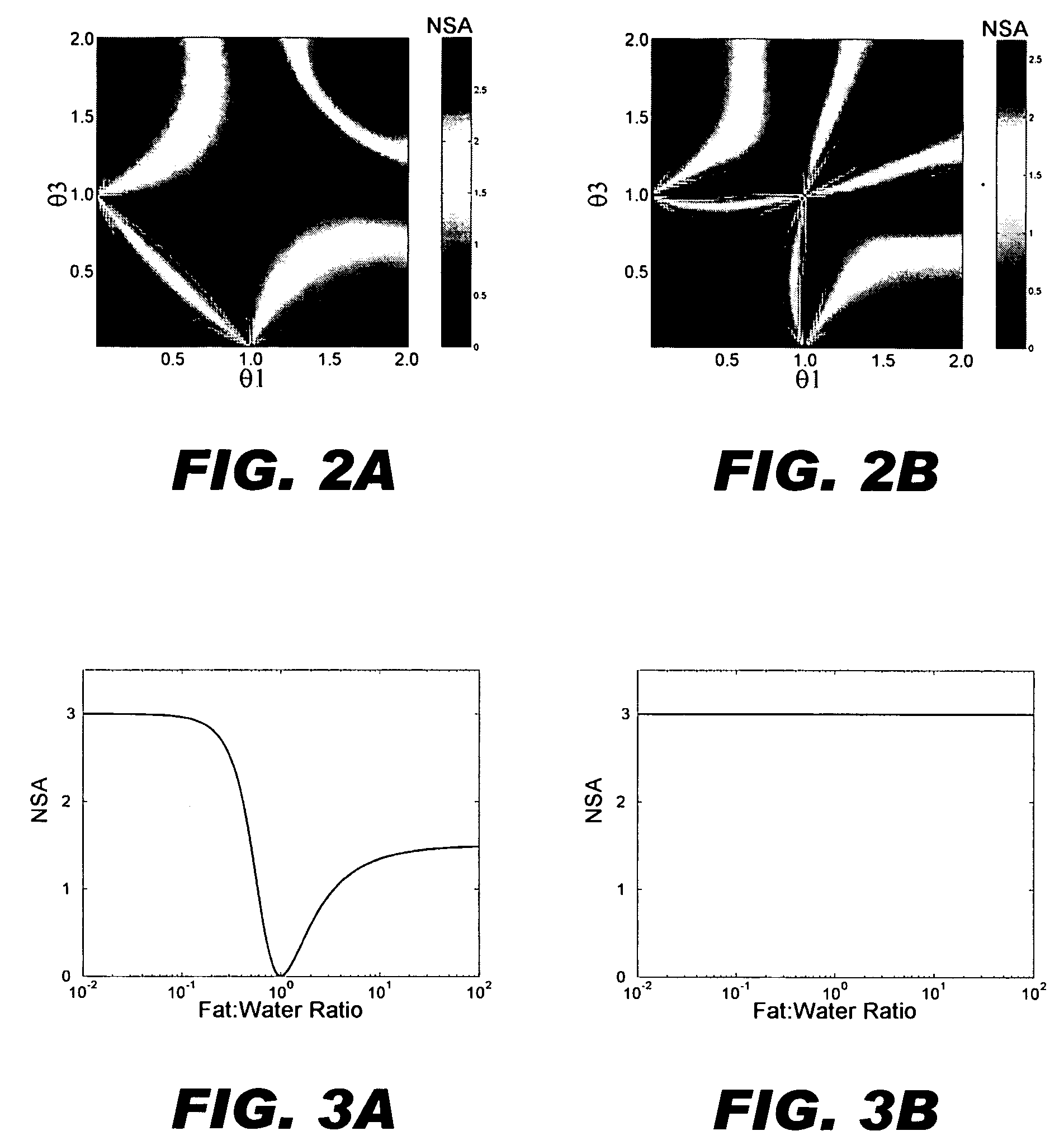Iterative decomposition of water and fat with echo asymmetry and least square estimation
a technology of water and fat, which is applied in the field of magneto resonance imaging (mri), can solve the problems of uniform fat separation, inability to fully characterize the theoretical noise performance of water-fat separation methods, and inability to decompose water from fat with dixon methods, so as to achieve the effect of maximizing noise performan
- Summary
- Abstract
- Description
- Claims
- Application Information
AI Technical Summary
Benefits of technology
Problems solved by technology
Method used
Image
Examples
Embodiment Construction
[0020]Symmetric echoes, as well as asymmetric echoes used in accordance with the invention can be understood intuitively by the realization that complex images acquired symmetrically before or after a spin-echo, are Hermitian conjugates of one another, and therefore contain the same information. In addition, all phase information is lost in echoes that are acquired at the spin-echo when chemical shift and field inhomogeneities are fully refocused. In general, at least three unique images acquired at different echo times are required to resolve water from fat. If an image is acquired when the phase of water and fat are orthogonal, i.e.: phase shift between water and fat is π / 2+πk (k=any integer) and there are no additional phase shifts from field inhomogeneities or other sources (e.g. coil, receivers, flow, etc), water and fat could, in theory, be resolved simply from the real and imaginary components of this image, respectively. However, two additional images are needed, to compensa...
PUM
 Login to View More
Login to View More Abstract
Description
Claims
Application Information
 Login to View More
Login to View More - R&D
- Intellectual Property
- Life Sciences
- Materials
- Tech Scout
- Unparalleled Data Quality
- Higher Quality Content
- 60% Fewer Hallucinations
Browse by: Latest US Patents, China's latest patents, Technical Efficacy Thesaurus, Application Domain, Technology Topic, Popular Technical Reports.
© 2025 PatSnap. All rights reserved.Legal|Privacy policy|Modern Slavery Act Transparency Statement|Sitemap|About US| Contact US: help@patsnap.com



